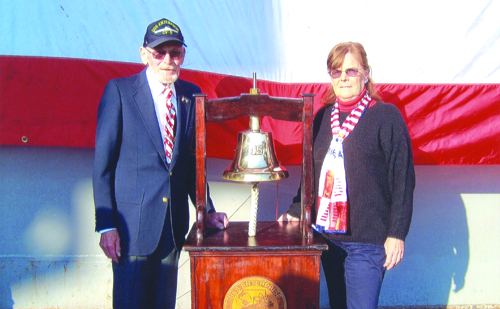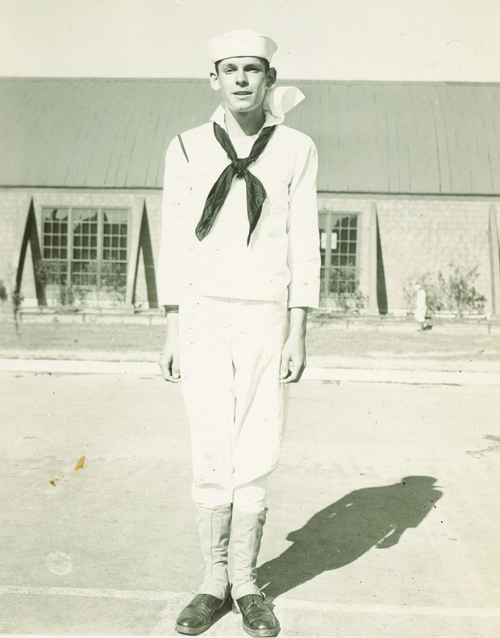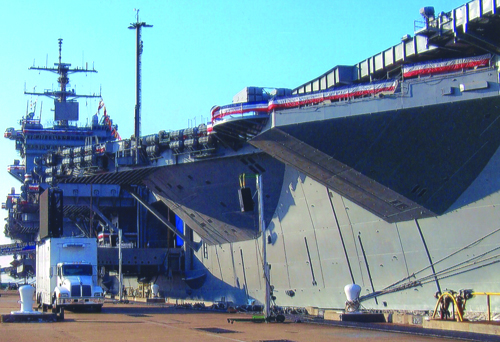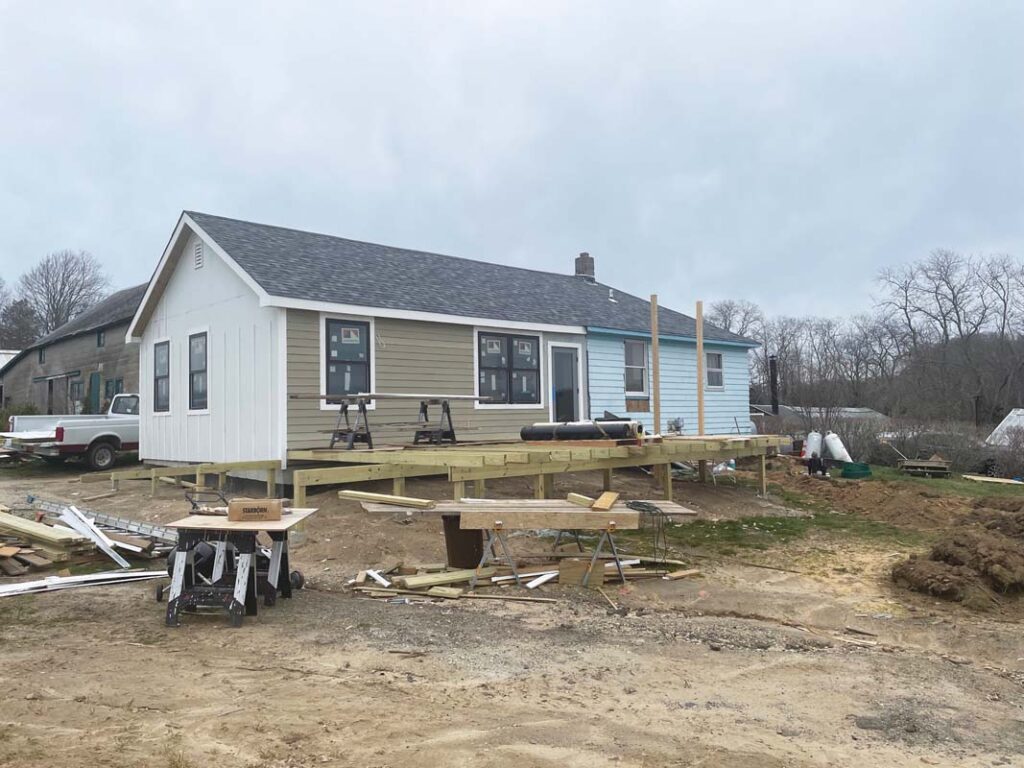Cutchogue man recalls sailing aboard the Enterprise

He was a crewman aboard the aircraft carrier U.S.S. Enterprise, known as CV-6, as the war ended. That ship, the seventh to bear its name, was decommissioned after the war and her successor, the first nuclear carrier known as CVN-65, served for more than 40 years until she was decommissioned on Dec. 1, 2012.
Mr. Midgley, one of the few surviving crew members of the long gone CV-6, was among the distinguished guests at the inactivation ceremony for the nuclear carrier in Norfolk, Va., where he met the secretary of the Navy and the ship’s most recent captain, William C. Hamilton Jr.
CVN-65’s motto is “We are Legend,” and the ship has a storied history. But her predecessor was nothing to sneeze at, even though Mr. Midgley said after visiting CVN-65 that his ship was much smaller.
“CV-6 was the most decorated ship the Navy ever had,” he said. “It was in more battles than any ship, with 20-plus battle stars.”
At the time CV-6 was built, he said, it was the largest ship ever built.
When he got on board the hanger deck of the later Enterprise, he said, “I couldn’t believe it. My ship could fit on the hanger deck.”
He and six other veterans from CV-6 took part in the inactivation ceremony.
“Capt. Hamilton was a gentleman,” he said. “They treated us royally. I shook hands with five admirals and the secretary of the Navy.” Mr. Midgley said he felt he’d come full circle after having shaken former Navy secretary James Forrestal’s hand in 1944.
Mr. Midgley almost missed the chance to serve on a ship. He’d been training to be an artillery mechanic in Norman, Okla., when he was asked to stay on as an instructor.
“I said, ‘I’m only 18 and I’m going to be an instructor? I want to be on a ship!’ı” he recalled. His insistence won him a spot in air crewman’s school on Whidbey Island, Wash., in Puget Sound, where CV-6 was being rebuilt after it was hit by a kamikaze in May 1945.
While waiting for the ship to be repaired, Mr. Midgley received three weeks’ leave to return home and visit his family on Skunk Lane in Cut chogue, where he still lives today. On the return cross-country rail trip, he learned that the atomic bomb had been dropped on Hiroshima.
“We said, ‘What the hell is an atomic bomb?’ı” he recalled. “Nobody had any idea.”
After returning to Whidbey Island, Mr. Midgley was part of the crew that took CV-6 out on a shakedown cruise. They were back in the shipyard on V-J Day, when all the sailors put on their dress blues and took the ferry to Seattle for a nonstop party in the streets.
“My uniform had so much lipstick on it when I got back on board,” he said. “Good lord, the girls were nutty that night.”
The U.S.S. Enterprise became the flagship that would lead the Pacific fleet through the Panama Canal and up the East Coast to New York.
“When we got out to sea, the other ships were joining us, as far as the eye could see, heading for the Panama Canal,” Mr. Midgley said. “The president of Panama came on board, and the president of Argentina. We were there three days. One day, we had a full turkey dinner for breakfast and, at the end, they gave you a cigar. It was something.”
The ship was eventually taken to Gravesend Bay near Coney Island, where it was unloaded. One winter’s night, while he was on midnight watch making sure the ship’s anchor didn’t drag, Mr. Midgley’s replacement failed to show up.
He was nearly frozen by the time the captain found him there, reading the notches on the anchor chain to see if it had pulled with a spotlight that he couldn’t put down because his hands were so cold. He’s been a carpenter his whole adult life and, to this day, he can’t feel the nails he holds in his hands.
Mr. Midgley once sought reimbursement from the V.A. for the frostbite, but discovered that his military records had been burned in a fire in a storage facility in Missouri.
But even though it’s hard to feel his hands, he says he wouldn’t have forgone the experience for the world.
“Not too many people get to shake hands with one, let alone two, secretaries of the Navy,” he said.
[email protected]










